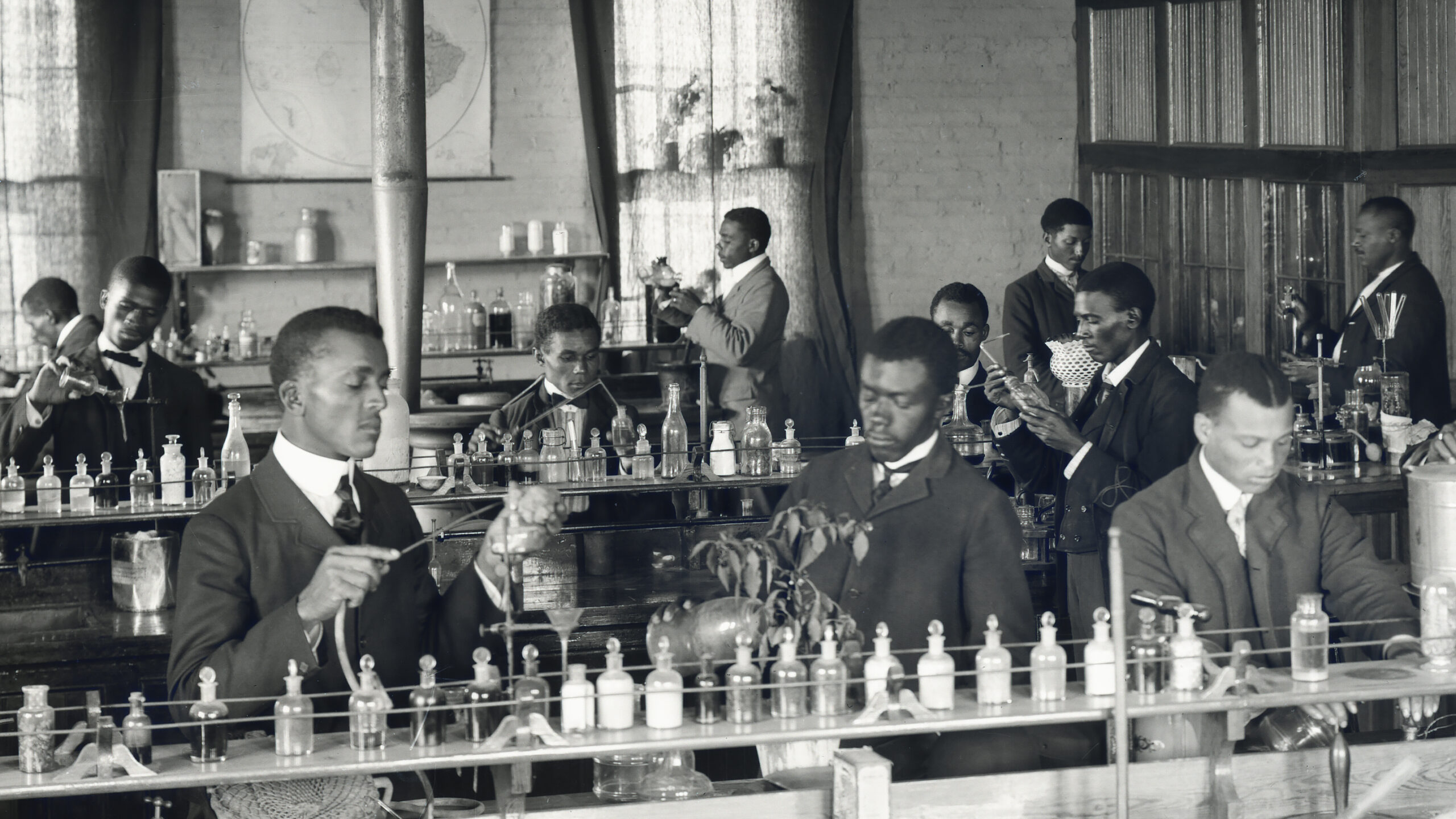Analyze
Tuskegee Institute
Genre: Photograph | Creator: Frances Benjamin Johnston | Date: 1902
Background
In 1902, Frances Benjamin Johnston took this photograph of the chemistry lab at the Tuskegee Institute, a school of higher education for Black Americans. Booker T. Washington was the Alabama school’s first principal. He raised funds, built and expanded the school, and recruited influential teachers, including scientist and inventor George Washington Carver, who is pictured second from the right and is framed by the doorway.

- Identify details that reveal what the photographer was most likely trying to convey.
- Explain the similarities and differences to today’s classrooms.